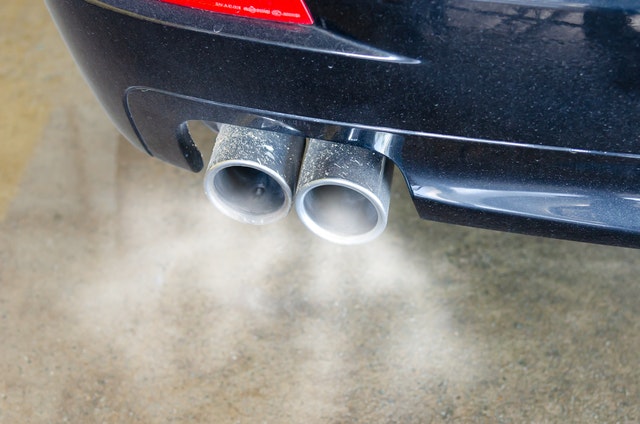Car emissions statistics
Matilda Douglas-Henry
Climate change is a very real and imminent threat, and being a car owner complicates the efforts we can make to reduce our carbon footprints. Fortunately, there are still ways to produce few emissions when driving, and the first step is to be informed about the reality of car emissions and the threat they pose to the environment and society at large. This article will break down emissions statistics, covering:
- An overview of car emissions statistics
- Car emissions across the world
- Car emissions in Australia
- Car makes and models with the least emissions
- How to minimise car emissions

Car emissions statistics: an overview
The average passenger vehicle emits 4.6 metric tonnes of carbon dioxide each year*.
General global trends show that the rate of emissions reductions has slowed over time; transport emissions in particular have steadily been on the rise over the past three decades.
While global CO2 emissions declined by 5.8 per cent in 2020 because of the COVID-19 pandemic, they are on track to bounce back and grow by 4.8 per cent by the end of 2021*.
Car emissions across the world
In many countries—such as the United States and the United Kingdom—transport emits more greenhouse gases than any other sector. (In Australia, transport makes up 18 per cent of all greenhouse gas emissions, with electricity taking first place at 33 per cent.)
In Europe, transport accounts for approximately 30 per cent of total CO2 emissions, 72 per cent of which comes from road transportation. However, the EU is making great strides to reduce transport emissions, with a goal to reduce by 60 per cent by 2050*. Driving alternatives, such as cycling and walking, are incredibly popular in European countries: in the Netherlands 26 per cent of commuters go by bike, so it comes as no surprise that the Netherlands is the EU country with the lowest CO2 emissions from new cars*. Denmark and Germany also see a significant number of journeys made by bike at 18 per cent and 10 per cent respectively*.
China is consistently the largest producer of greenhouse gas emissions. In 2019, 27 per cent of the world’s greenhouse gases came from China, which is more than the entire developed world combined—the United States came in second place with 11 per cent*. Motorised vehicles are a major air pollution source in the country, emitting approximately 7.7 million tonnes of carbon monoxide in 2020 alone*.
Car emissions in Australia
Australian cars pollute more per kilometre than most other countries. With a combined vehicle fleet of 19.2 million, it is one of the least efficient and most polluting in the world. With more and more households buying new vehicles—and 87 per cent of Australians driving to work each day—there doesn’t seem to be any sign of slowing down.
Australia is infamous for its pretty dismal approach to reducing emissions. Reducing our carbon footprint doesn’t seem to be much of a priority, as there are few policies implemented that would help target our huge carbon footprint. In some countries such as the United States, Japan, and China, there are mandatory pollution standards for vehicles: something that Australia doesn’t have. Road-based transport pollution is responsible for more emissions in Australia than the global average*.
To read more in-depth about emissions in Australia specifically, check out our article on “Car pollution statistics”.
Which car makes and models produce the least emissions?
With the steady rise of electric vehicles, we are thankfully starting to see more and more cars that produce significantly less emissions than traditional makes and models. Australia is only just starting to catch on to the electric cars market, but sales are projected to see a major increase over the next few decades.
Here is a list of the best and worst hybrid or petrol-fueled vehicles to buy in Australia, ranked by the emissions they produce.
Lowest emissions from passenger cars (as at 2020):
- Suzuki
- Fiat
- Alpine
- MINI
- Toyota
Highest emissions from passenger cars (as at 2020):
- Lamborghini
- Chrysler
- Ferrari
- LDV
- Maserati*
How to minimise car emissions
A lot of grander visions for emissions reduction will need to come from government bodies, but there is a lot that we can do as individuals to reduce our carbon footprint, particularly as a regular driver. First off, the obvious: opt for public transport instead of using your car as your main mode of transport, if possible, or go the extra mile and walk or cycle.
If driving is unavoidable, there are many ways to heighten environmental efficiency, like regularly servicing your car. Ensuring that your tyres have enough air in them at all times can also reduce emissions. Avoid air conditioning and substantial city driving, and cruise control on long drives can save petrol use. Another great way to reduce emissions is to carpool on your commute, as it means there is one less car on the road.
Buying a new car? Consult forums—or lists like the one above—for the most energy efficient vehicles, and remember that cars that produce lower emissions often cost less to own overall .
Conclusion
If you’ve read this far, you clearly care about the environment and how to be as efficient and responsible a driver as you can. Remember to adhere to the advice in the section above, and use DingGo’s quick quotes service if you are ever in need of repairs.
